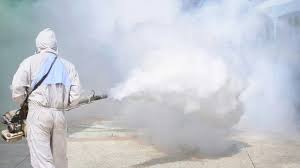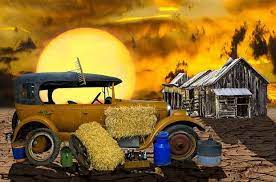Types and Nature of Fumigants
All space fumigant products and several soil fumigant products, especially those containing chloropicrin and/or methyl bromide, are now labeled Restricted-Use. A number of fumigant active ingredients formerly used have either been cancelled or have had their uses strictly limited in the US (Rodriguez, undated).
Fumigants are broad-spectrum pesticides that can act as respiratory poisons, anesthetics or narcotics, or enzyme poisons. They are chemically simple molecules, but they can exert potent and wide- ranging effects on the target organisms.
On account of their gaseous nature and acute inhalation toxicity, fumigant products are labeled as Toxicity Category I with signal word Danger, or Danger-Poison with the skull and crossbones symbol.
Outlined below are some of the active ingredients that are still available and legal to use.
Methyl bromide is formulated as a liquid and vapour under pressure. It is odourless, non-flammable, and generally not corrosive nor irritating to eyes as a vapour. Because of its high toxicity and odourlessness, many formulations contain chloropicrin as a warning agent on non-food products.
Methyl bromide products are used both for space and soil fumigation. If trapped inside tight clothing next to skin, methyl bromide can cause severe skin burns.
It should not be used to fumigate materials containing sulphur (e.g., hair, fur, leather, and rubber goods) because of an undesirable chemical reaction with sulphur. It might also be necessary to actually conduct a small-scale fumigation on a suspect material to determine if it might react.

Chloropicrin is a heavy, colourless, non-flammable chemical with an irritating tear gas odour. In similarity to methyl bromide, it is highly toxic by inhalation. If added to methyl bromide formulations at a concentration of 2% or less, it is considered to be only a warning agent but at a concentration exceeding 2%, it is considered an active ingredient that enhances the fumigant activity of the methyl bromide.
Read Also : Soil Fumigation, Importance and Types of Fumigation
Aluminum phosphide and magnesium phosphide are space, commodity, and rodent burrow fumigants. They are formulated as pellets, tablets, prepacs, prepac ropes, bags and plates. They are solids that react with moisture to liberate hydrogen phosphide (phosphine), which is a gas highly toxic to insects, humans, rodents, and other animals.
It is thus absolutely necessary to keep aluminum phosphide and magnesium phosphide products DRY in storage. Since magnesium phosphide is more reactive aluminum phosphide, it is generally recommended for fumigation under cooler and/or drier conditions.
Sulfuryl fluoride is a space fumigant used primarily to control wood- destroying insects. It is a colourless, odourless, non-flammable gas formulated in cylinders under pressure.
Sulfuryl fluoride is the active ingredient contained in Vikane, which requires special monitoring equipment for its use. Registration is expected soon to permit sulfuryl fluoride under the trade name Profume to be used for fumigating flour mills and similar areas.
DDVP, also known as dichlorvos, is a contact and stomach insecticide with some fumigant action and is used to protect stored products.
It is an organophosphorus insecticide requiring special precautions when used with other organophosphate products.
DDVP is somewhat corrosive and should be kept dry in storage. It is under Special Review by the Environmental Protection Agency.
Ethylene oxide is a colourless, toxic, flammable liquefied gas that can be used as a fumigant on spices, black walnuts, and copra. It is formulated with carbon dioxide or dichlorodifluoromethane to reduce flammability.


